
Agnolo Bronzino was a great Italian portraitist and a brilliant intellectual of the Mannerist era
Agnolo Bronzino (November 17, 1503 – November 23, 1572) was a renowned Italian artist of the 16th century, a prominent master of portraiture and mythology, and a vivid representative of Mannerism. His body of work also includes numerous allegorical paintings, and the artist's biography serves as an excellent example of devoted service to art.
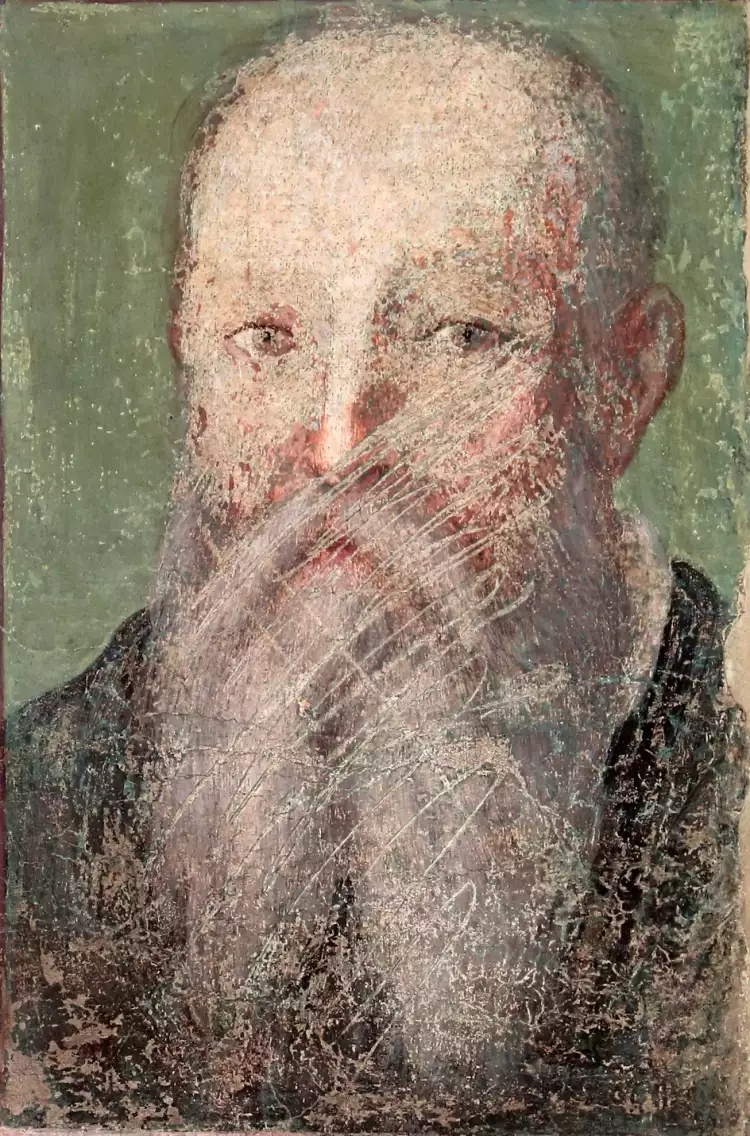 Bronzino. Alessandro Allori. Portrait of Bronzino, 1570s
Bronzino. Alessandro Allori. Portrait of Bronzino, 1570s
Agnolo Bronzino passionately created not only magnificent easel works but also produced a considerable number of colorful frescoes and altar paintings. He was a well-educated and well-read individual who maintained warm friendships with literary figures and often wielded the pen himself, composing witty verses.
 Bronzino. Portrait of Guidobaldo della Rovere, 1532
Bronzino. Portrait of Guidobaldo della Rovere, 1532
Biography of Agnolo Bronzino
Agnolo Bronzino was born on November 17, 1503, in Florence, into a butcher's family. His given name was Agnolo di Cosimo, but he acquired the nickname Bronzino at a young age due to his characteristic bronze skin tone and red hair. From an early age, the boy displayed a talent for drawing, leading his parents to send him first to the workshop of the artist Raffaellino del Garbo and later, at the age of 14, to the renowned portraitist Pontormo.
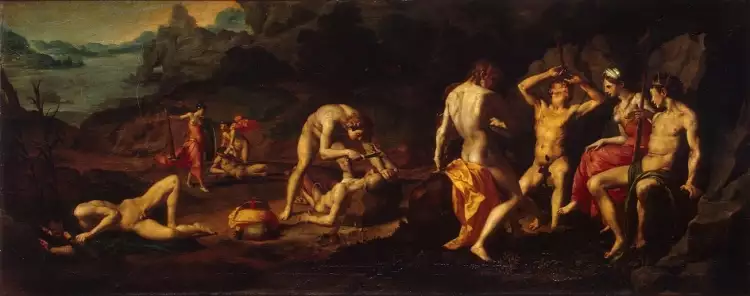 Bronzino. Flaying of Marsyas, 1532
Bronzino. Flaying of Marsyas, 1532
It was Pontormo who was responsible for shaping his pupil's unique style. For almost three decades, Bronzino worked closely with his teacher on fresco paintings and religious-themed pictures, so the masterpieces created during this period are rightfully considered joint works of two outstanding painters.
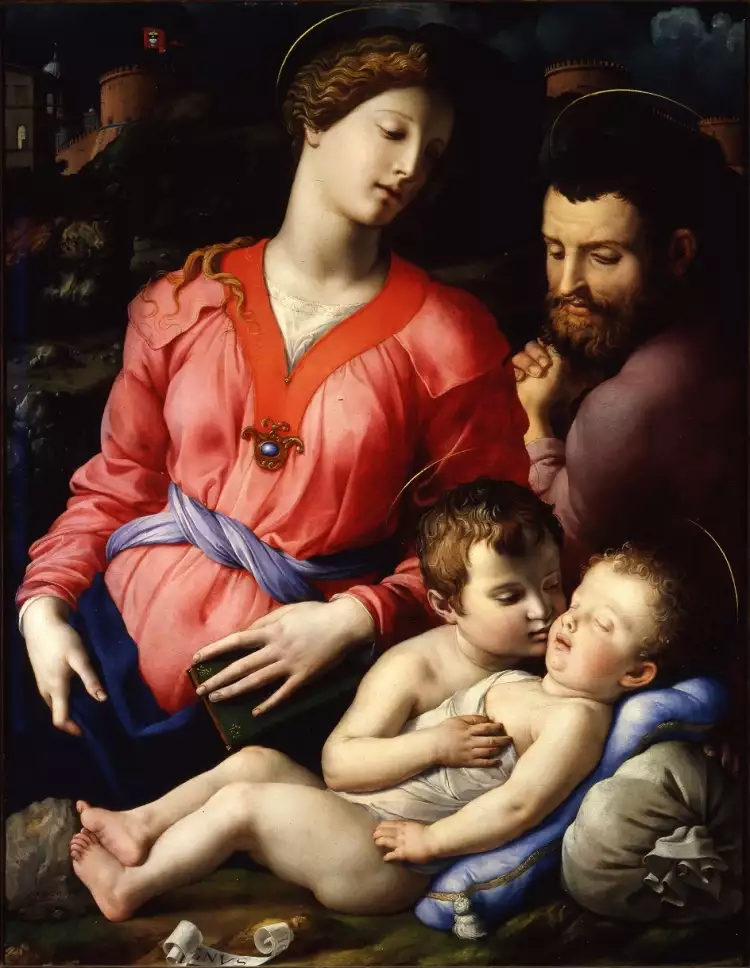 Bronzino. Holy Family with St John the Baptist, 1540
Bronzino. Holy Family with St John the Baptist, 1540
In 1530, a significant event occurred in Bronzino's life – he was appointed as the court artist to Duke Urbino Francesco Maria I della Rovere. Shortly after, the artist received a substantial commission for fresco painting in his patron's villa, a task he brilliantly accomplished. Bronzino then painted "The Contest of Apollo and Marsyas" and a portrait of the young heir to the duke, Guidobaldo. These works brought the painter widespread recognition and marked the beginning of his flourishing artistic career.
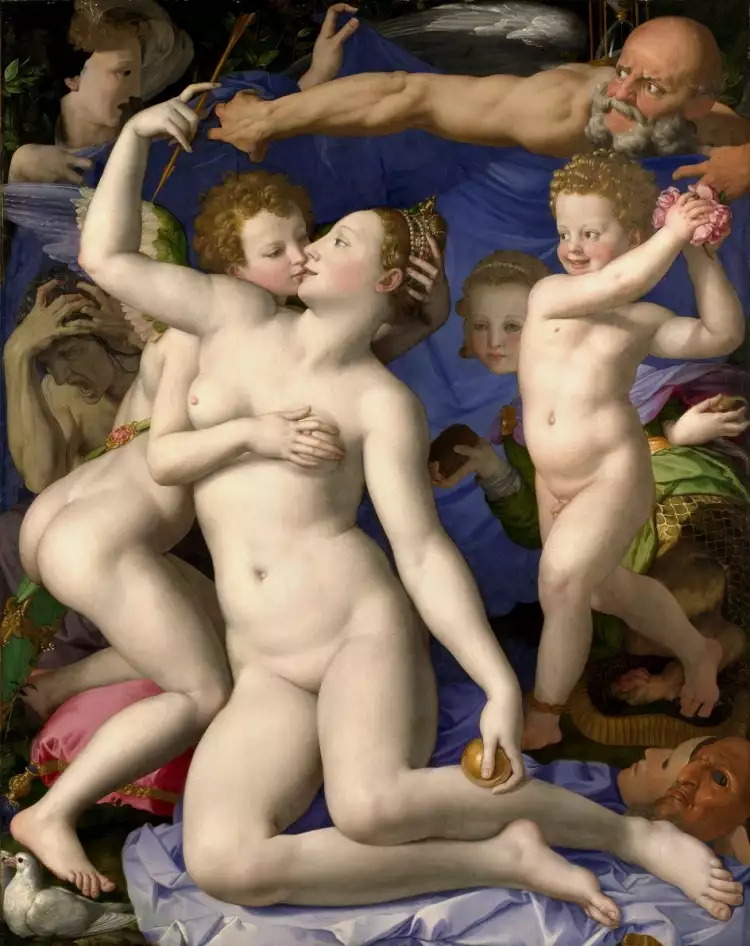 Bronzino. Venus, Cupid, Folly and Time, 1545
Bronzino. Venus, Cupid, Folly and Time, 1545
In 1533, Bronzino returned to his native Florence, where he was appointed as the court artist to Duke Alessandro de' Medici (Alessandro Medici). Four years later, the 26-year-old patron of the painter was assassinated by a hired killer, but this event did not have a negative impact on the artist's fate. On the contrary, after Alessandro's death, supreme power in Florence fell into the hands of his distant relative Cosimo I de' Medici, who continued to support Bronzino.
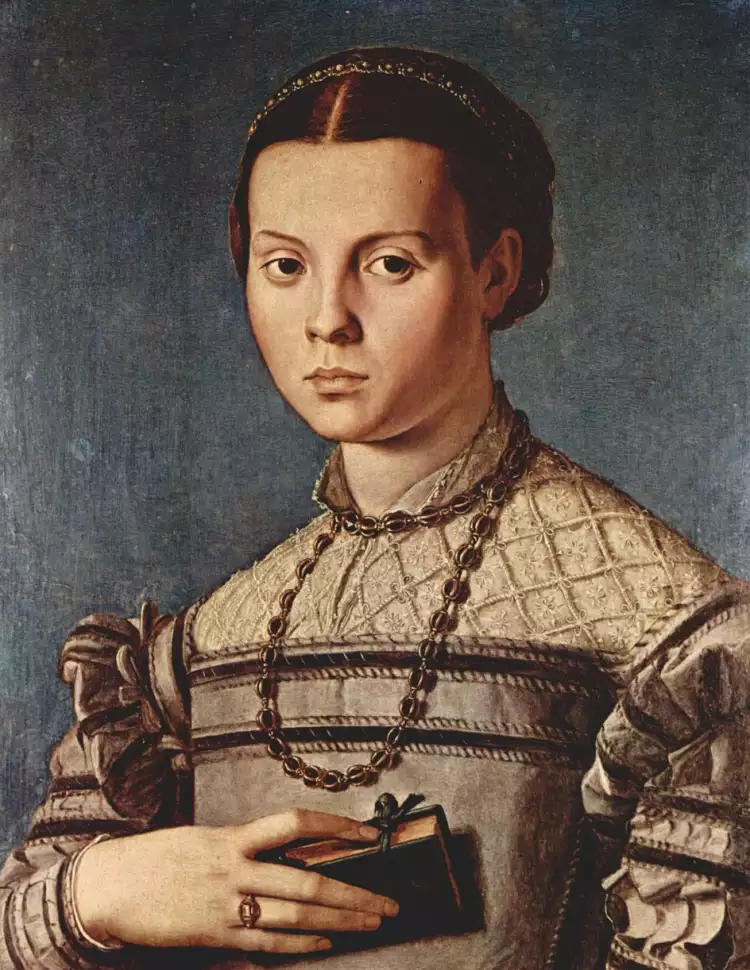 Bronzino. Portrait of a young unknown, 1545
Bronzino. Portrait of a young unknown, 1545
The duties of the court painter included not only creating paintings but also organizing festive events with vibrant theatrical decorations. In addition, Bronzino found time to design sketches for Florentine tapestry workshops and create altar images for local churches.
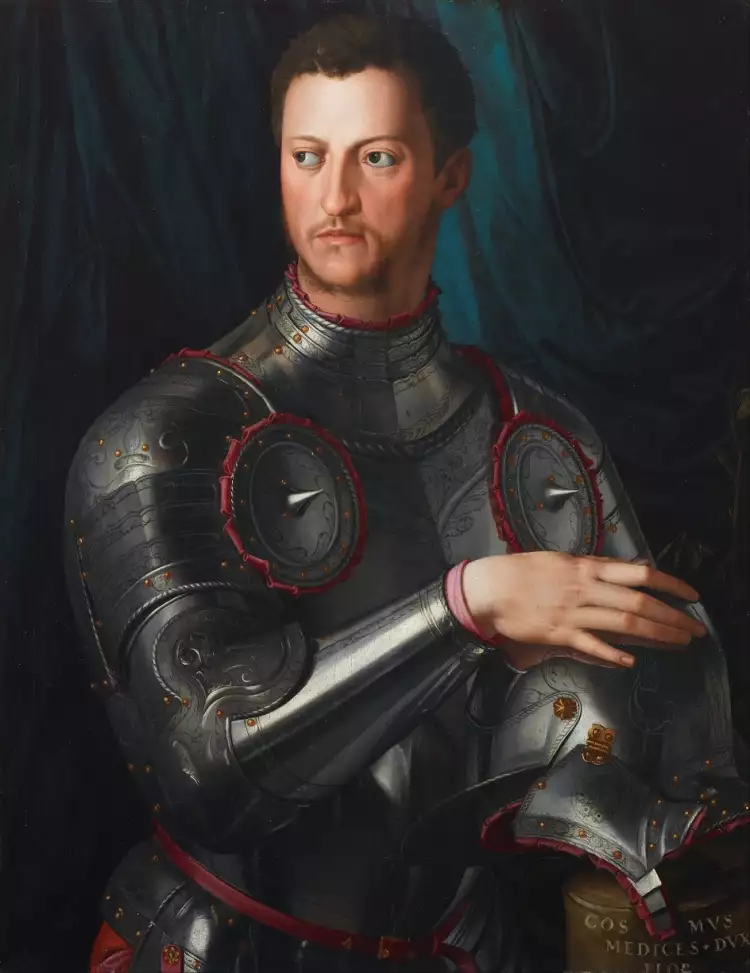 Bronzino. Portrait of Cosimo I de' Medici in armour, 1545
Bronzino. Portrait of Cosimo I de' Medici in armour, 1545
The primary genre in the artist's work for many years remained portraiture, and throughout his long life, Bronzino never bothered to paint a self-portrait. However, he left a series of intriguing allegorical paintings in which he skillfully depicted male and female nudes.
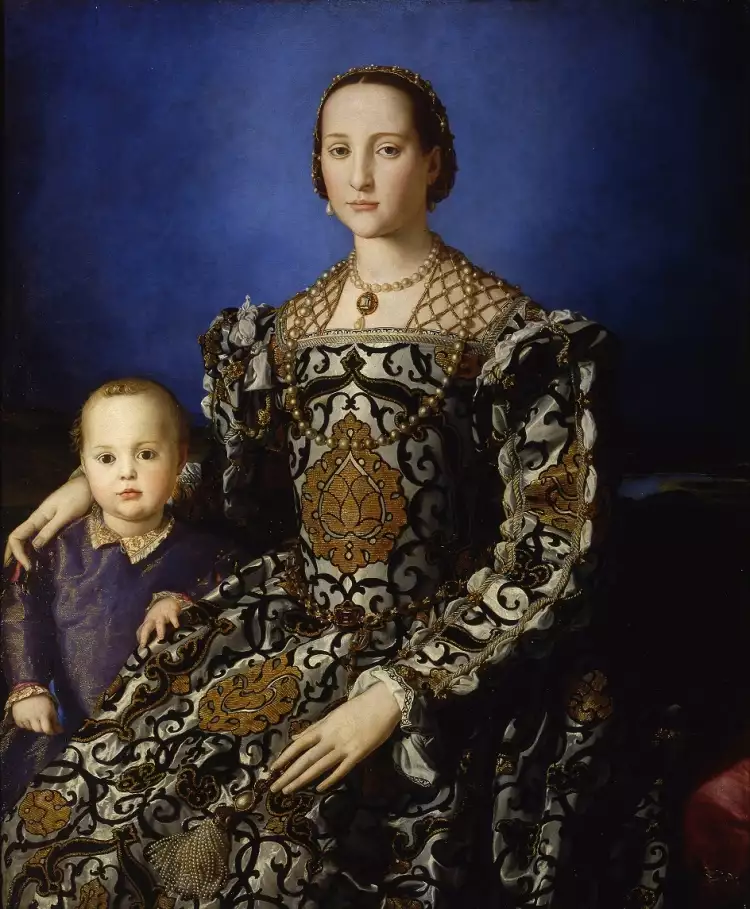 Bronzino. The Portrait of Eleanor of Toledo and Her Son, 1545
Bronzino. The Portrait of Eleanor of Toledo and Her Son, 1545
Most of the artist's life was spent in his hometown of Florence, but in 1546, he took a creative journey to Rome, and in 1564, to Pisa. Becoming a renowned master of painting, Bronzino also found time to mentor young talents, and his favorite pupil, Alessandro Allori, later became an outstanding portraitist of the Mannerist era.
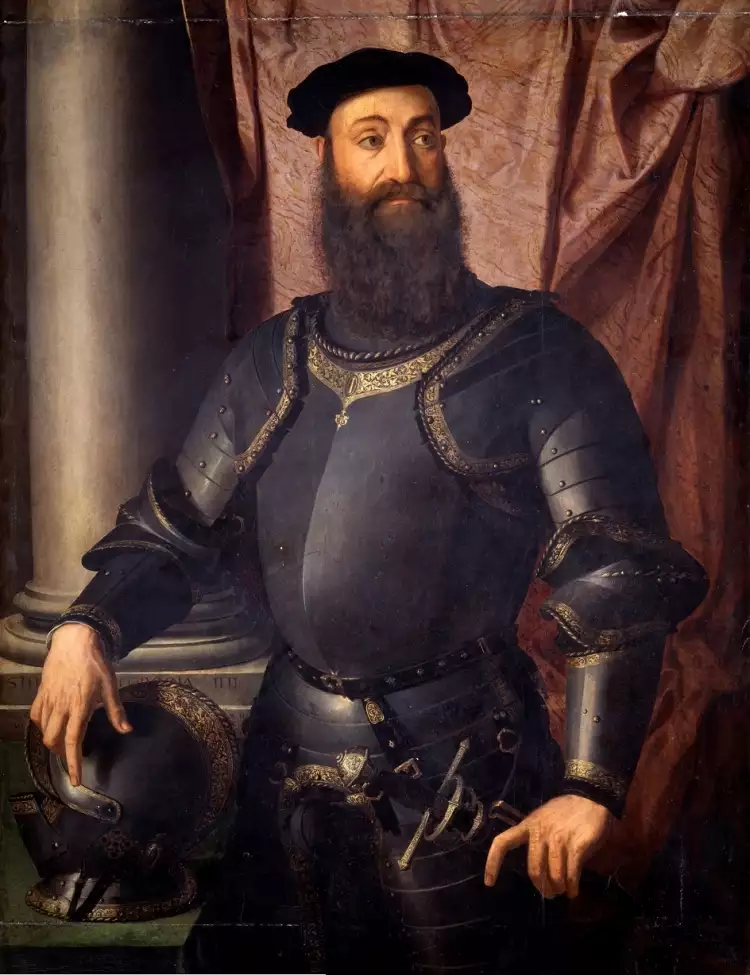 Bronzino. Portrait of Stefano Colonna, 1546
Bronzino. Portrait of Stefano Colonna, 1546
Bronzino was never married, had no children, and was a rather prosperous man. He led a relatively modest life and preferred spending time in the company of intellectuals rather than in the noisy company of drinkers. Nevertheless, the time allotted to the artist by fate was inevitably approaching its melancholic end.
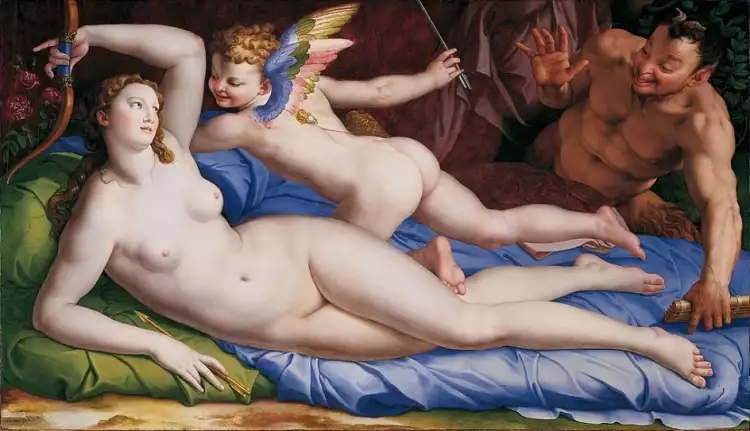 Bronzino. Venus, Cupid and a satyr, 1555
Bronzino. Venus, Cupid and a satyr, 1555
On November 23, 1572, Bronzino left this world for eternity. His funeral was held in a very modest setting, and a simple monument with a heartfelt inscription was placed on the grave of the great master: "He who lives as Bronzino lived does not die..."
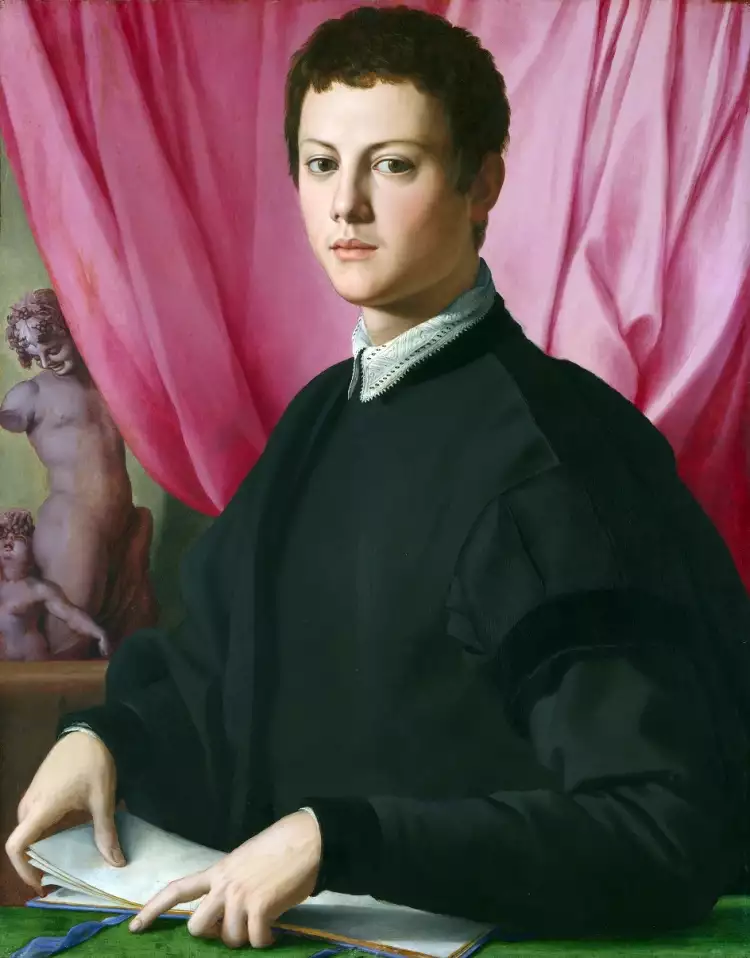 Bronzino. Portrait of a Young Man, 1555
Bronzino. Portrait of a Young Man, 1555
Bronzino's Most Famous Paintings
Among the works of the great Italian painter, there are numerous outstanding masterpieces of art. Nevertheless, the most famous paintings by Bronzino can rightfully be called the following works:
- "Allegory with Venus and Cupid" (1545) - a multi-figure allegorical painting featuring the exquisite erotic representation of the Roman goddess of love. The identification of secondary characters in this painting continues to spark heated debates among art historians.
- "Portrait of Cosimo I de' Medici in Armor" (1545) - the most renowned among the portraits of the great Duke of Florence, painted by the artist. In this painting, Bronzino's patron is depicted as a proud and confident ruler.
- "Portrait of Eleonora of Toledo with her Son" (1545) - an image of Cosimo de' Medici's wife, Eleonora, dressed in sumptuous brocade attire alongside her son Giovanni. The lady's clothing carefully conceals her figure, in accordance with the portrait painting conventions of the 16th century Mannerist style.
- "Portrait of Andrea Doria as Neptune" (1540s) - a beautiful allegorical painting in which the renowned Genoese admiral appears before the viewer in the guise of the all-powerful god of the seas and oceans. The artwork is executed in the finest traditions of classical ancient sculpture, where heroes were almost always depicted nude.
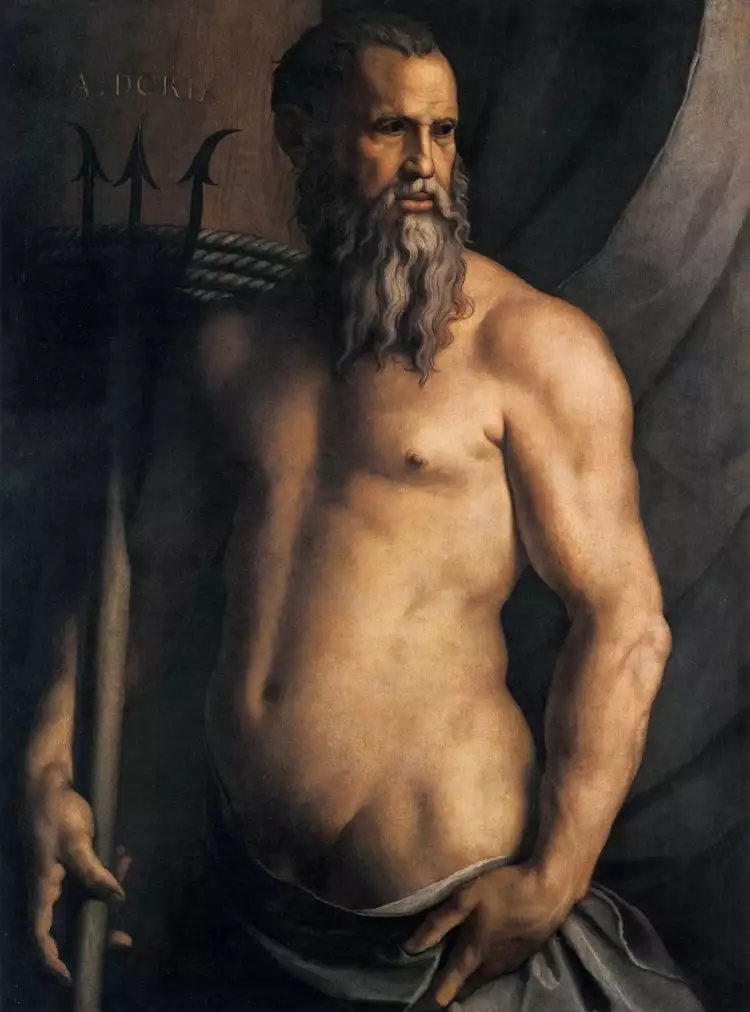 Bronzino. Portrait of Andrea Doria as Neptune, 1540-е
Bronzino. Portrait of Andrea Doria as Neptune, 1540-е
Bronzino has left a significant mark on the history of world visual arts and will remain in the memory of generations. His exquisite paintings have been astonishing viewers with their cool color palette and impeccable precision in the smallest details for nearly five centuries.
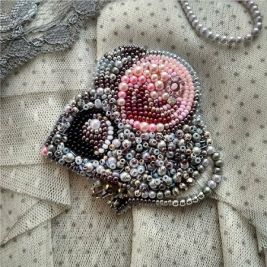 Application is a technique of decorative and applied art: essence, types, history
Application is a technique of decorative and applied art: essence, types, history 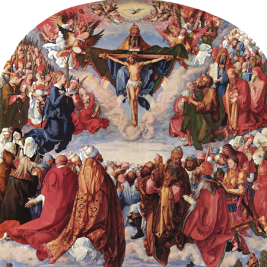 The painting "The Adoration of the Trinity" by Albrecht Dürer - The City of God through the eyes of the artist
The painting "The Adoration of the Trinity" by Albrecht Dürer - The City of God through the eyes of the artist  Special auction Faussner collection
Special auction Faussner collection 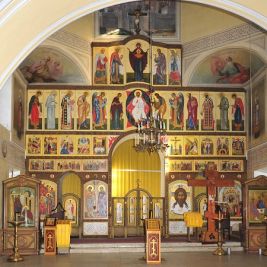 The most famous Orthodox icons
The most famous Orthodox icons  Photography is an art accessible to everyone
Photography is an art accessible to everyone 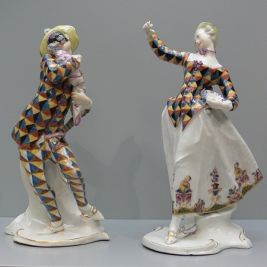 Nymphenburg Manufactory: A History of Porcelain Production
Nymphenburg Manufactory: A History of Porcelain Production 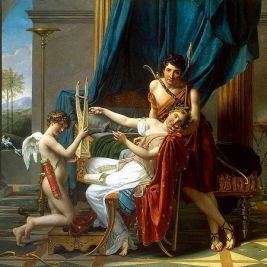 Neoclassicism: once again, an alignment with ancient ideals!
Neoclassicism: once again, an alignment with ancient ideals! 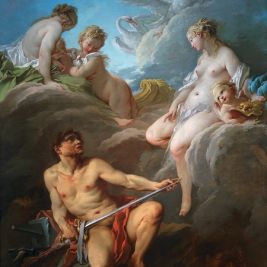 François Boucher - the frivolous artist of the French king: biography and best paintings
François Boucher - the frivolous artist of the French king: biography and best paintings 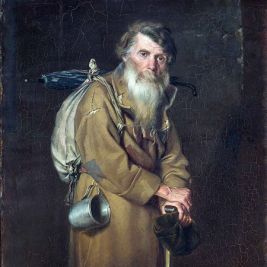 The painting "The Wanderer" by Vasily Grigorievich Perov portrays the image of noble poverty and human dignity
The painting "The Wanderer" by Vasily Grigorievich Perov portrays the image of noble poverty and human dignity  Fernando Botero is the most famous artist in Latin America
Fernando Botero is the most famous artist in Latin America